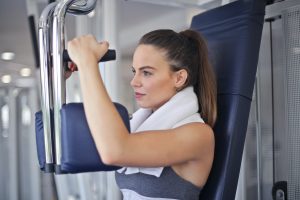
What is hypermobility?
In this post we’re talking about conditions like hypermobility spectrum disorder (HSD) and hypermobile Ehlers Danlos Syndrome (hEDS).
“Hypermobility is the term used to describe the ability to move joints beyond the normal range of movement. Joint hypermobility is common in the general population. It may be present in just a few joints or it may be widespread… In many people joint hypermobility is of no medical consequence and commonly does not give rise to symptoms.”
However
“Joint hypermobility with its possible complications is now classified using the idea of a spectrum. At one end is simple hypermobility which causes no symptoms, is not a disease and is a trait, like height. At the other end of our spectrum is hEDS, and in between falls a range of hypermobility-related conditions called hypermobility spectrum disorders (HSD).”
It is at the end of the spectrum where hEDS and HSD occur that serious and sometimes debilitating problems can occur.
Hypermobility is caused by faulty collagen, the most abundant protein in your body. Collagen is a major component of tendons, ligaments, skin and muscles, and you may have heard of it as a common ingredient in skin firming and anti-aging face creams. The collagen that should be keeping tendons, ligaments and muscles (including the muscles that push food through your gastric system) firm and strong is faulty in hypermobility patients, which causes them to become lax and weak.

As such, hypermobility can cause partial and full joint dislocations, joint pain, fatigue, hernias, prolapses, pelvic and bladder dysfunction, gastric and colonic function delays or failure, and orthostatic tachycardia. In other words, it can be an incredibly debilitating condition that can affect almost all parts of your body and can leave patients requiring the use of a wheelchair, crutches and joint braces, feeding tubes, catheters, major surgery and a lifelong need for medication.
How does it affect exercise?
Hypermobility can make exercise extremely difficult. Fatigue and gastric failure can make it hard to even attempt exercise, and that’s before factoring in dislocations, pelvic dysfunction and orthostatic tachycardia that can make exercise anything from embarrassing to dangerous.
Additionally, bear in mind that hypermobility often means you don’t feel when you’re movement is going from normal extension to hyperextension, and many hypermobility warriors have poor proprioception (understanding of where their body is in space). So it’s really easy to over extend your joints without even knowing.
In short, exercising without appropriate oversight and training with an experienced and knowledgeable professional can lead to serious injury.
How can exercise help improve the symptoms?
Despite the risks, exercise – when done safely and appropriately – is a key part of the treatment and management plan with hypermobility.
Strength training, in particular,
“enhances muscles, ligaments, tendons and bones. Being stronger reduces the risk of injuries and provides additional support to your joints. Having strength offers you greater capacity to undertake physical and functional tasks.”
In other words, strength training can strengthen lax joints and muscles, which in turn will reduce partial and full dislocations.
Exercise can also help conditions that are secondary to hypermobility like PoTS which we’ve written about here.
What adjustments can be made while exercising?
Slow and Controlled
Instructors and trainers often push for their clients and class participants to work harder and faster, but this is the wrong approach for those with hypermobility, and can lead to injury. Keep your movements slow and controlled to allow for correct set up, time to think about what muscles should be activating, and to help prevent hyperextension (movements beyond the ‘normal’ or healthy range of movement).
Buddy Up
Whether it’s your personal trainer, a gym buddy or a family member at home, having someone assist with correct form, staying within a healthy range of movement and assisting with set up can be an invaluable tool in making sure training is safe and effective.
Mirrors Are Our Friends
Mirrors in gyms may seem like they’re there for beef cakes to admire their biceps, but they can be an invaluable tool for making sure form and movements are done correctly. It may feel strange at first but you’ll soon find that your focus is so firmly on the movement or exercise you’re doing that you won’t notice others around you.
Ask a Class Teacher to Keep An Eye on You
If you’re going into a group class, mention to the instructor before it starts that you’re hypermobile, and that you’d appreciate a nod or an extra instruction if they see you hyperextending. Class instructors should want their participants to be safe and to get as much out of the class as possible so any instructor worth their salt will want to help.
Weight Machines Can Be A Useful Tool

Start Small
Exercising just using your own body weight and the effect of gravity will still give you a great workout. Don’t feel that you have to jump straight in with using weights or other equipment – start simple and work up the strength to take on the tougher stuff.
Got other useful tips? Got questions?
Drop us a comment below or an email at hello@chronicallyawesome.org.uk and we’ll get back to you ASAP.
Useful links & resources
NHS pages about hypermobility and EDS: https://www.nhs.uk/conditions/ehlers-danlos-syndromes/ and https://www.nhs.uk/conditions/joint-hypermobility-syndrome/
Ehlers-Danlos Support UK: https://www.ehlers-danlos.org/what-is-eds/information-on-eds/hypermobile-eds-and-hypermobility-spectrum-disorders/ and https://www.ehlers-danlos.org/information/exercise-and-movement-for-adults-with-hypermobile-ehlers-danlos-syndrome-and-hypermobility-spectrum-disorders/

